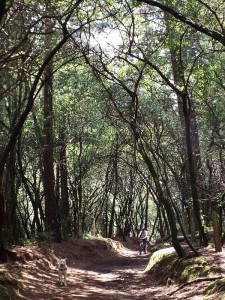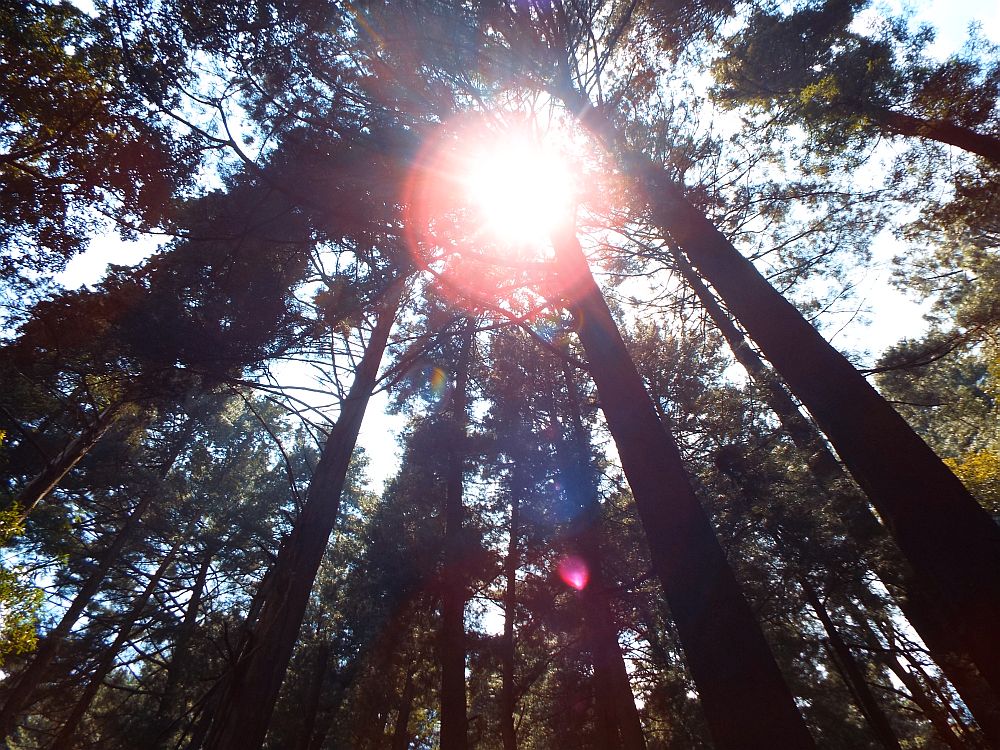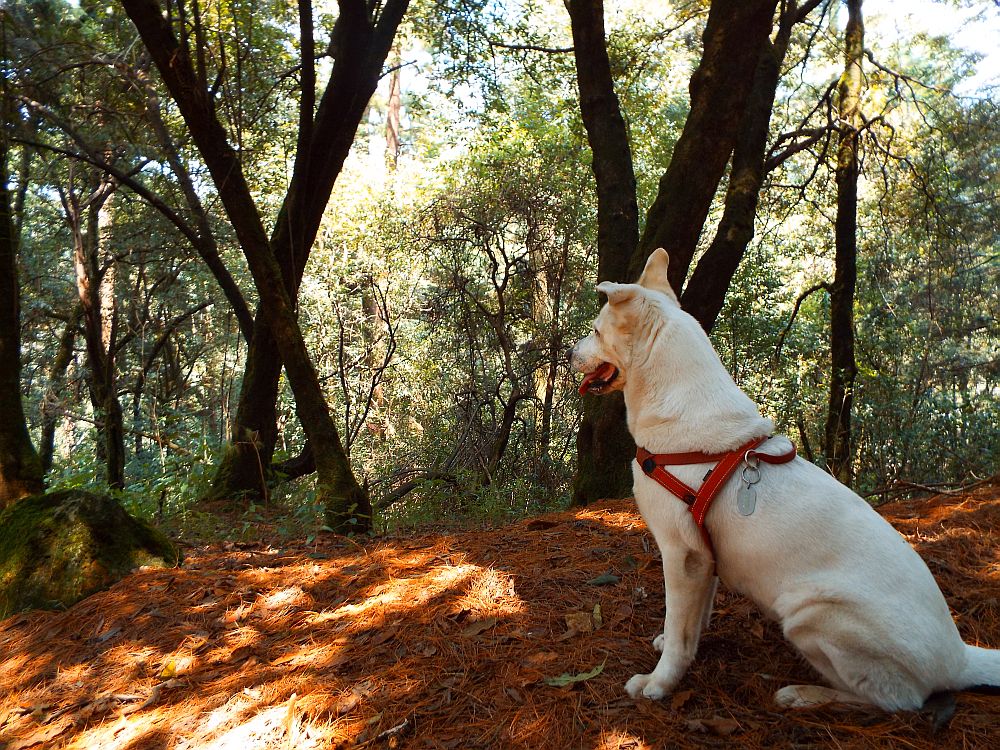In Juan Villoro’s short essay “The Metro” about traversing Mexico City he talks about the city’s boundaryland — The Desierto de los Leones National Park — and its peculiar commonality with the hic sunt leones of medieval maps — the label given to unexplored, dangerous lands on the edge of known civilization. For the most urban of chilangos, people who spend all their days and nights within the city streets, driving 30 minutes into the cloudy and damp forest that sits just beyond Mexico City, might very well feel like the end of the world as they know it.
There is most definitely something otherworldly about it IF you can get away from the quesadilla vendors tempting you with lunch and the mechanical kiddie rides and the stands of woolen socks and hats and walk deep into the park’s most silent parts, where the pine needles soften your steps and the trickle of natural springs suddenly drowns out the traffic on the highway.
This was the original plan of the barefoot Carmelite monks who decided to build their convent there between 1606 and 1611. Though they didn’t have to fight the sound of traffic 400 years ago, they were looking for a space where they could practice their strict regime of poverty, penance and prayer. The concept of the “desert” comes from the Carmelites. The area itself isn’t a desert but a high-altitude, damp forest mostly consisting of various types of pine and oak trees.
The Carmelites called their convent Santo Desierto de Nuestra Señora del Carmen de los Montes de Santa Fe (roughly translated as: The Sacred Desert of Our Lady Carmen of the Santa Fe Hills) because it was a place isolated from the city, a metaphorical desert. Life in the convent was contemplative, silent, and simple, time was spent mostly in prayer, doing daily chores and building and maintaining the convent. The hermetic monks that lived there had almost no contact with the outside world.
 In the 1800s, at the start of Mexican Independence, the Carmelites were forced to abandon their convent and the area. Some sources say it was for logistical reasons — illnesses brought on by the cool, damp climate, the encroaching city — others say it was because they were forced to cede the land to the government of Vice Royalty, either way the property was abandoned for many years and became a haven for thieves and was even used as a factory for producing false money. The convent and its gardens now welcome visitors to walk their passageways and take in the history, as well as dine at the convent’s family-style restaurant.
In the 1800s, at the start of Mexican Independence, the Carmelites were forced to abandon their convent and the area. Some sources say it was for logistical reasons — illnesses brought on by the cool, damp climate, the encroaching city — others say it was because they were forced to cede the land to the government of Vice Royalty, either way the property was abandoned for many years and became a haven for thieves and was even used as a factory for producing false money. The convent and its gardens now welcome visitors to walk their passageways and take in the history, as well as dine at the convent’s family-style restaurant.
What would all those silent, pious Carmelite monks think about the thousands of cyclists, hikers and tourists that now visit the park every weekend? Hopefully they would recognize their similar need to retreat from the city and its chaos. The park was named an ecological preserve in 1876 in order to preserve its importance to the growing capital — within it are many of the natural springs that feed Mexico City’s aquifers and it’s an important part of the lungs of our massive metropolis. It was further named a national park in 1817.
The San Mateo Tlaltenango community members are who you will see collecting an entrance fee to the park and charging for parking there. This community’s land purportedly encompasses 80% of the park but the legality of them collecting money and controlling the park’s entrances and exits is locally debated.
The nicest paths and most deserted areas are reached by taking the Cuajimilpa/Desierto de los Leones exit off of the Mexico-Toluca Highway  57. You will go through a small tollbooth (27p) and follow the signs to Desierto de los Leones, cross the bridge into town, and almost immediately to your left is an open-air parking lot (20p). Park here and walk up the hill to the right and follow the dirt road back into the woods (fair rides on your right).
57. You will go through a small tollbooth (27p) and follow the signs to Desierto de los Leones, cross the bridge into town, and almost immediately to your left is an open-air parking lot (20p). Park here and walk up the hill to the right and follow the dirt road back into the woods (fair rides on your right).
Walking back you will want to take one of the paths to the right off of the dirt road to steer yourself away from the highway. Once inside the forest, you’re likely to see other hikers and cyclists but not at the rate that you find in the area surrounding the convent and the main parking lot further inside the park near the food stands.
Once on these inside paths, you can walk for hours enjoying the cold, fresh air. Desierto de Leones is always chillier than the city so be sure to bring layers … and money… lots of food stands greet you on your way out selling quesadillas, barbacoa, micheladas, and other typical Mexican fare.
To get back to the city you exit to your left out of the parking lot and make the first right which will loop you back to the highway (the off-ramp and on-ramp from the highway to the park form a half shamrock). Although I haven’t taken public transit to get there, I’ve read that outside the Viveros metro stop there is a bus to “Santa Rosa Desierto de los Leones” that will take you to the park.
See you there next weekend?
Click here to subscribe via RSS


